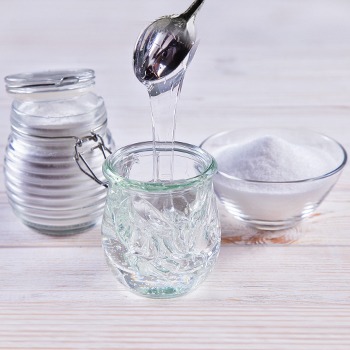
HIGH DE SYRUPS
Product family:
Sweeteners
Labelling:
Liquid sweeteners
Area of Application:
FOOD

Main Characteristics:
Dextrose equivalent (reducing substances)
60
Total Solids, %, max.
83
SO2 content, mg / kg, max.
< 10
Color, ICUMSA units, max.
20
Industry |  Baked goods |  Confectionery |  Dairy products |  Processed fruit and vegetables |  Processed meat and fish food |  Sauces & dressings |  Prepared mixes |  Beverages, non-alcoholic |  Canned foods |
|---|---|---|---|---|---|---|---|---|---|
| Benefits & Properties | Strengthening of chewing properties | Gives elasticity / hardness | Stability | Sweetness control | Affects the taste | Sweetness control | Binding agent | Sweetness control | Structure improvement |
| Dough rheology | Crystallization control | Sweetness control | Smoothness enchance | Humidity control | Smoothness enchance | Crystallization control | Affects the taste | Sweetness control | |
| Glossy or shiny surface | Humidity control | Provides necessary texture | Thickening and stabilization | Gives necessary texture | Syneresis resistant | Viscosity | Viscosity | Crystallization control | |
| Gives a wet / soft consistency | Sweetness control | Viscosity | Viscosity | Viscosity | Thickening and stabilization | Structure improvement | Enhance flavor | Glossy or shiny surface | |
| Source of fermentable sugars | Structure control | Viscosity | Energy value | Viscosity | |||||
| Sweetness control | Viscosity | Osmotic control |
General Information:
High-sugar starch molasses, with more than 60% glucose content, has an increased sweetness and a lower viscosity in comparison with other molasses. It is produced by enzymatic hydrolysis of cornstarch with coal and ion-exchange resins cleaning, which guarantees high product purity and unchanged quality during storage.
High-sugar starch molasses increases the shelf life of the finished product, prevents the crystallization of sugars, reducing the probability of the sugaring process. Therefore, it is used in the production of soft confectionery fillings, jams, toppings, sauces, ketchup and other food products.
Product Specification request


